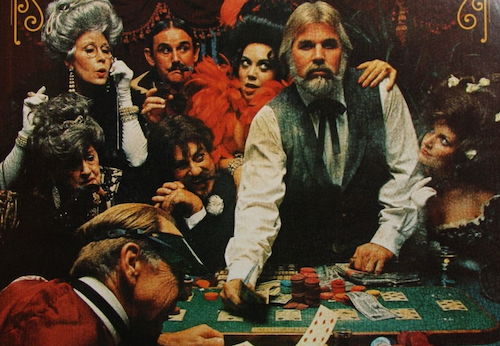It is easy to get motivated for short term rewards.
The carton of ice cream in the freezer need only be scooped into a bowl, The scoop picked up with a spoon, the spoon lifted to the mouth, and seconds later, heaven.
A smooth,cool, sucrose and lipid rich emulsion melts over your tongue. Pleasure was predicted. And pleasure was delivered. And it only took about 30 seconds.
Which is why this is not a blog about how to eat ice cream. I’m pretty sure you’ve got that covered.
But even if you’re a monk like supersaver, early retirement does not deliver instant rewards.
As an example, an ultra disciplined, non-car owner, beans and rice eater, who saves 75% of his take-home income, must work seven years before reaching early retirement.
Now in the grand scheme of things 7 years is certainly not much. But we’re not talking grand schemes here. Were talking about human cognition which (as already mentioned) is very biased towards short-term rewards. And on this level, seven years may as well be never.
But if I didn’t believe early retirement and financial independence were goals worth pursuing, I would never have started this blog.
So What are some tricks that I use, to transform saving for retirement into a pursuit of instant gratification (in order to improve my odds of success?)
1. Pay yourself first.
I’ve already written about this angle, but automatically diverting part of your paycheck to savings each month is a very powerful technique indeed.
The trick here is not so much changing your perception of what’s pleasurable, as it is taking spending choices out of your hands entirely.
This is a prescient technique that basically says “I know that the way I make decisions is irrational, so I will not make any decisions at all. This money will be saved automatically whether I choose to do anything or not.”
This is the Odysseus move. You metaphorically Strap yourself to the mast, and have your shipmates plug their ears with wax so that you can hear the siren’s song (of spending money) but not act on it.
2. Entertain a gambling addiction.
Let Kenny teach you good financial decision making skills…
I think I’ve already mentioned that I’m not much of a gambler.
I know that I’ve mentioned that I’m a firm believer in passive investing.
But what’s one of the first things I do after waking up each morning on the West Coast?
I look on my phone to see how the stock market is doing.
Which is kind of a strange thing for a passive investor who doesn’t like gambling to do. Right?
I’m not timing the market so no matter what the market does, if my will is strong, I won’t execute any trades.
So what am I getting out of it?
I’m gambling. Much as a horse race becomes more interesting when you have two dollars on a horse to place, or the Super Bowl becomes more interesting when you have a couple dollars in a pool, I’m deriving pleasure from having skin in the game.
And it’s pretty addicting to be sure. Which certainly motivates me (at the all important sub-cortical level where immediate gratification resides) to keep on adding more savings to the pot.
3. Go ahead, count your chickens.
It is very satisfying to visualize the power of your saved money.
It is also very easy.
Just go to an online financial calculator and have some fun.
Let’s say I want to retire in 15 years with an investment income of $40,000 a year. And I’m starting off from zero. No savings, no debt.
This means that my goal nest egg is $1 million.
(click on the hyperlink if you want a more detailed post on the math behind these assumptions.)
So how much should I save every month, assuming 7% returns in the stock market?
I need only plug my age, my desired age to be a millionaire, my amount already invested, and my assumed return (7%) into a handy-dandy financial calculator. And voila, there it is : $3154.95.
Or how about an even simpler calculation. (Courtesy of Mr. Money Mustache.)
Let’s say I start each day off with a Starbucks latte for two dollars.
How much would I save in 10 years At a 7% rate of return if I instead invested my coffee money in my retirement?
I need merely multiply my weekly expense by 752 or my monthly expense by 153.
So if my weekly expense is $14, then in 10 years I could reasonably expect to have $10,528 saved up.
Which (at least in my mind) changes the decision from “do I buy a latte or not?” to “should I buy a latte or a
Ferraro wood-burning pizza oven.”
if you’ll excuse me, I have a pizza dough technique to perfect…

I think I’ll pass on the vente latte


8 Responses to “Sooner or Later?”